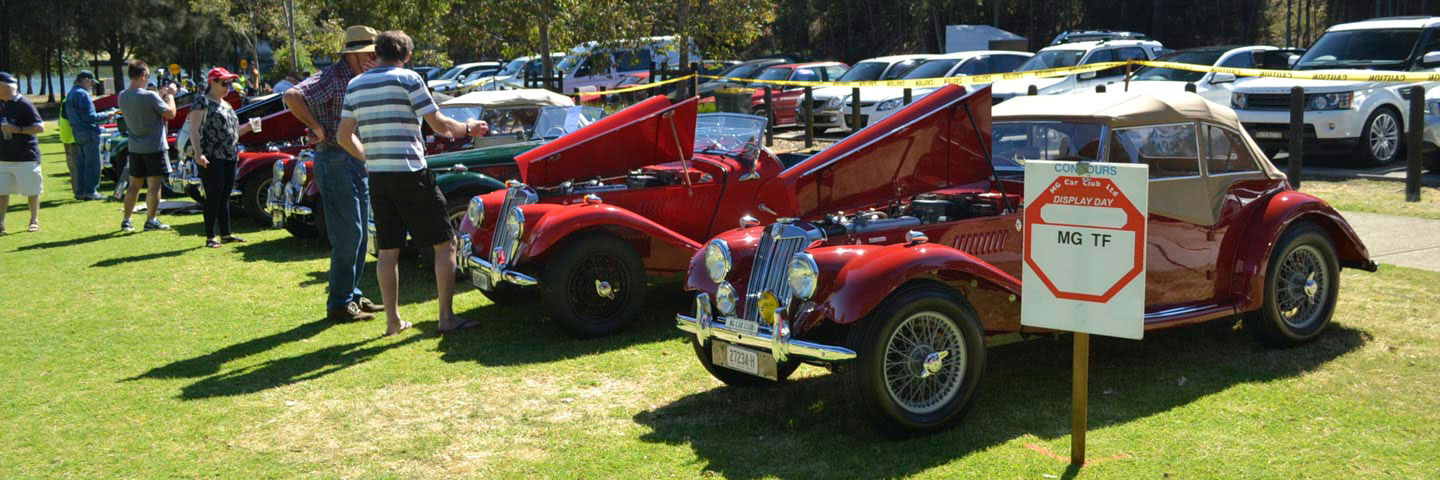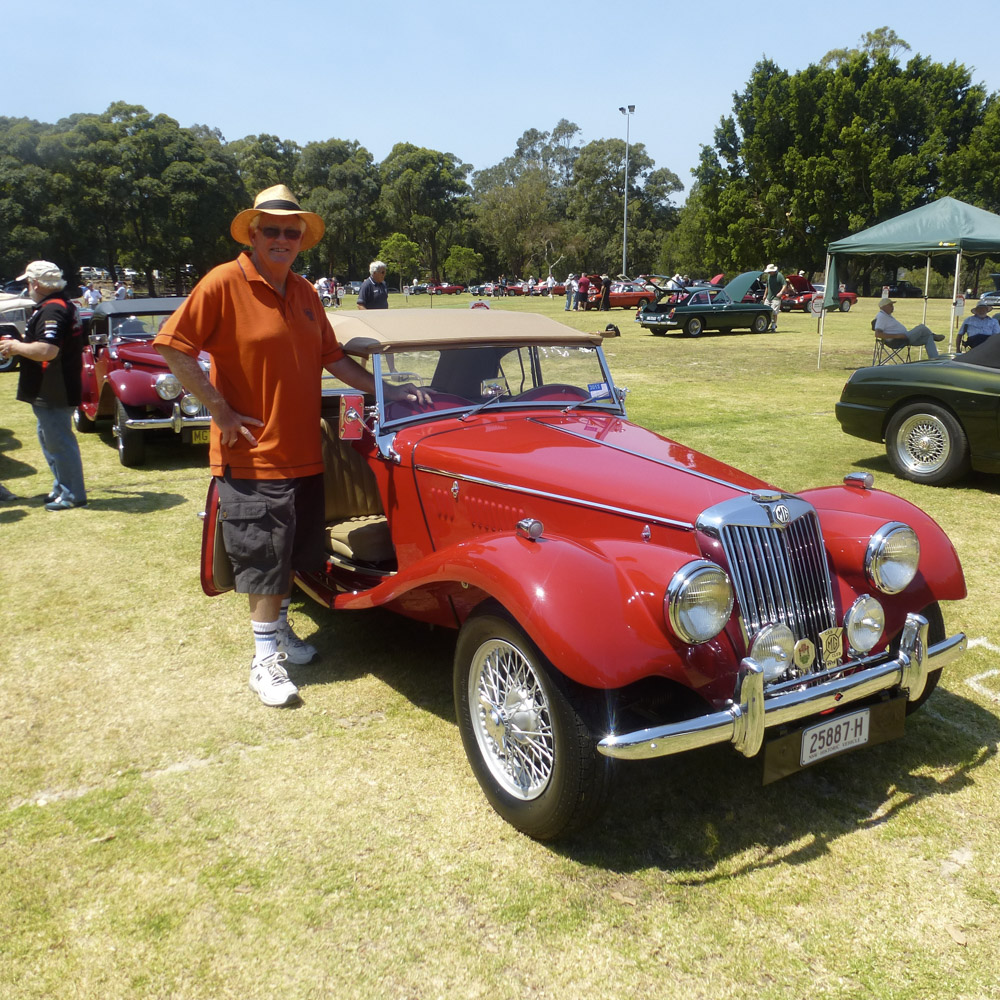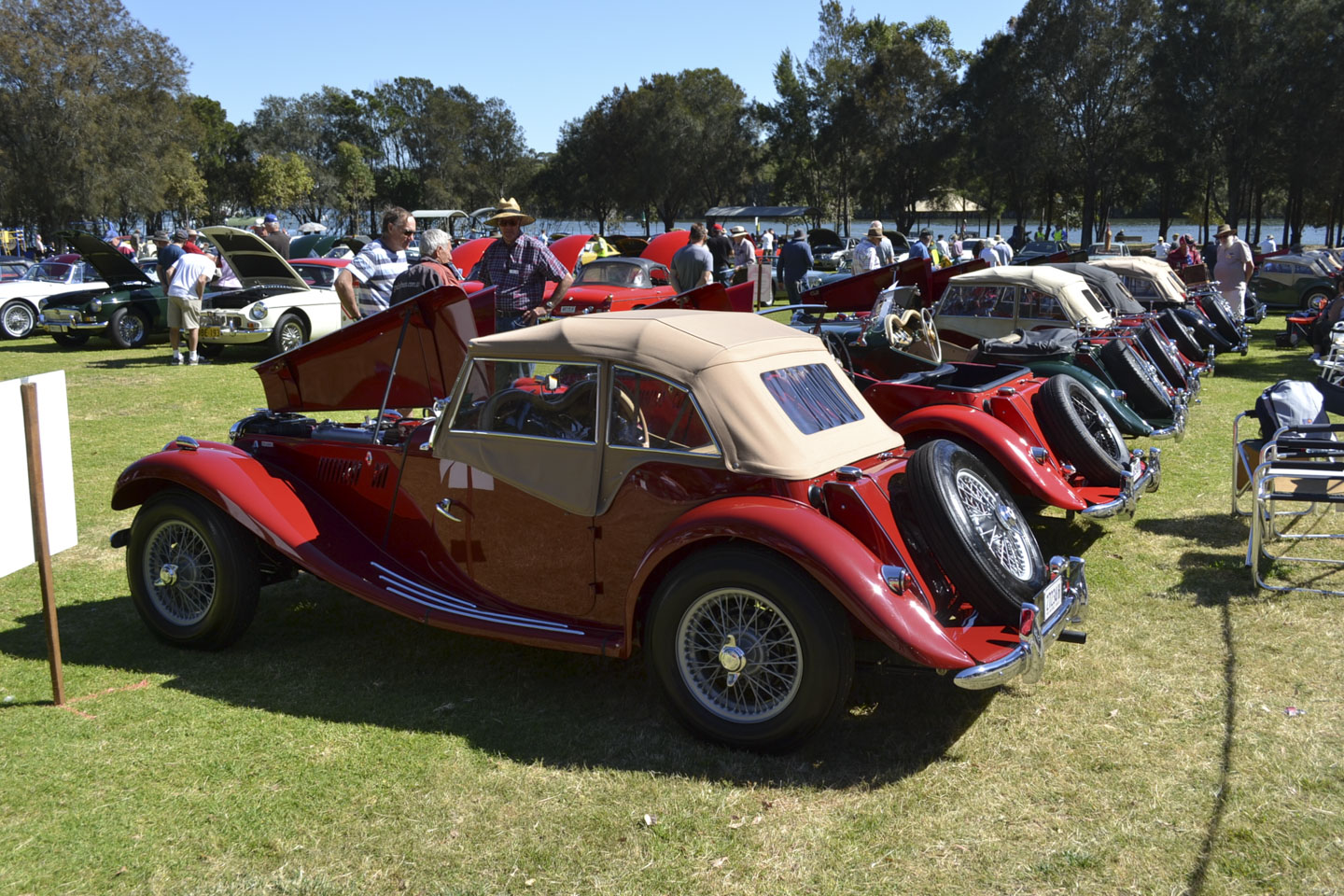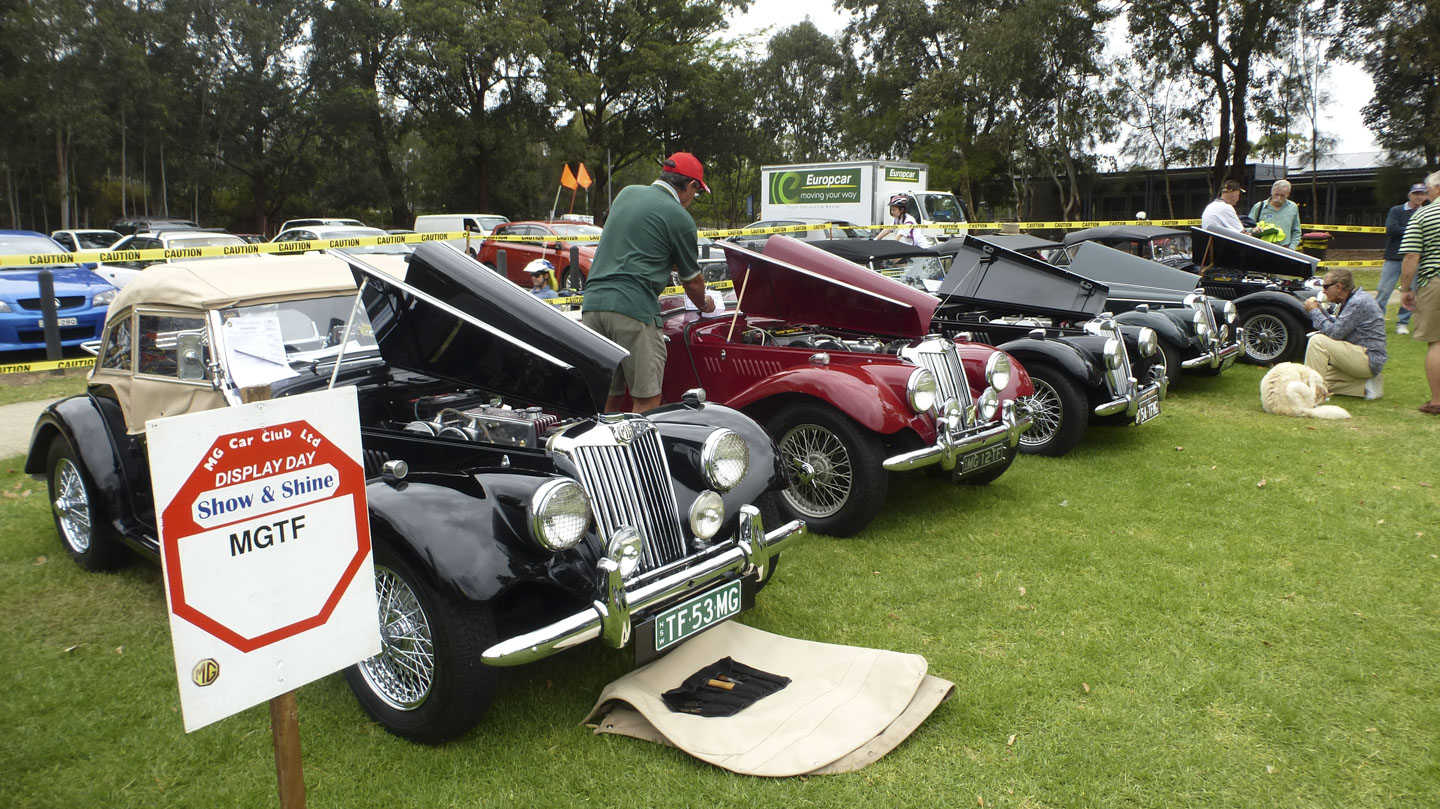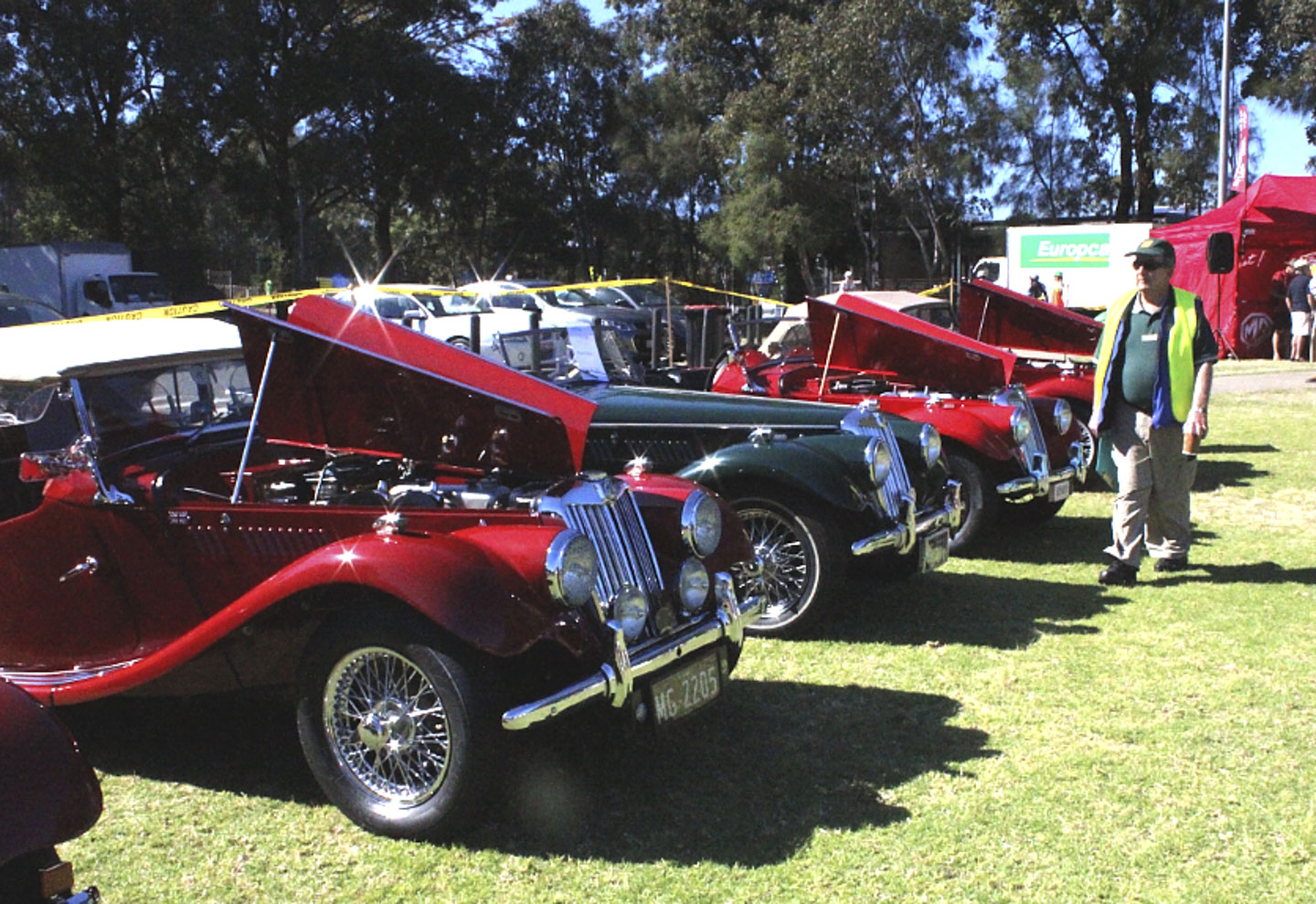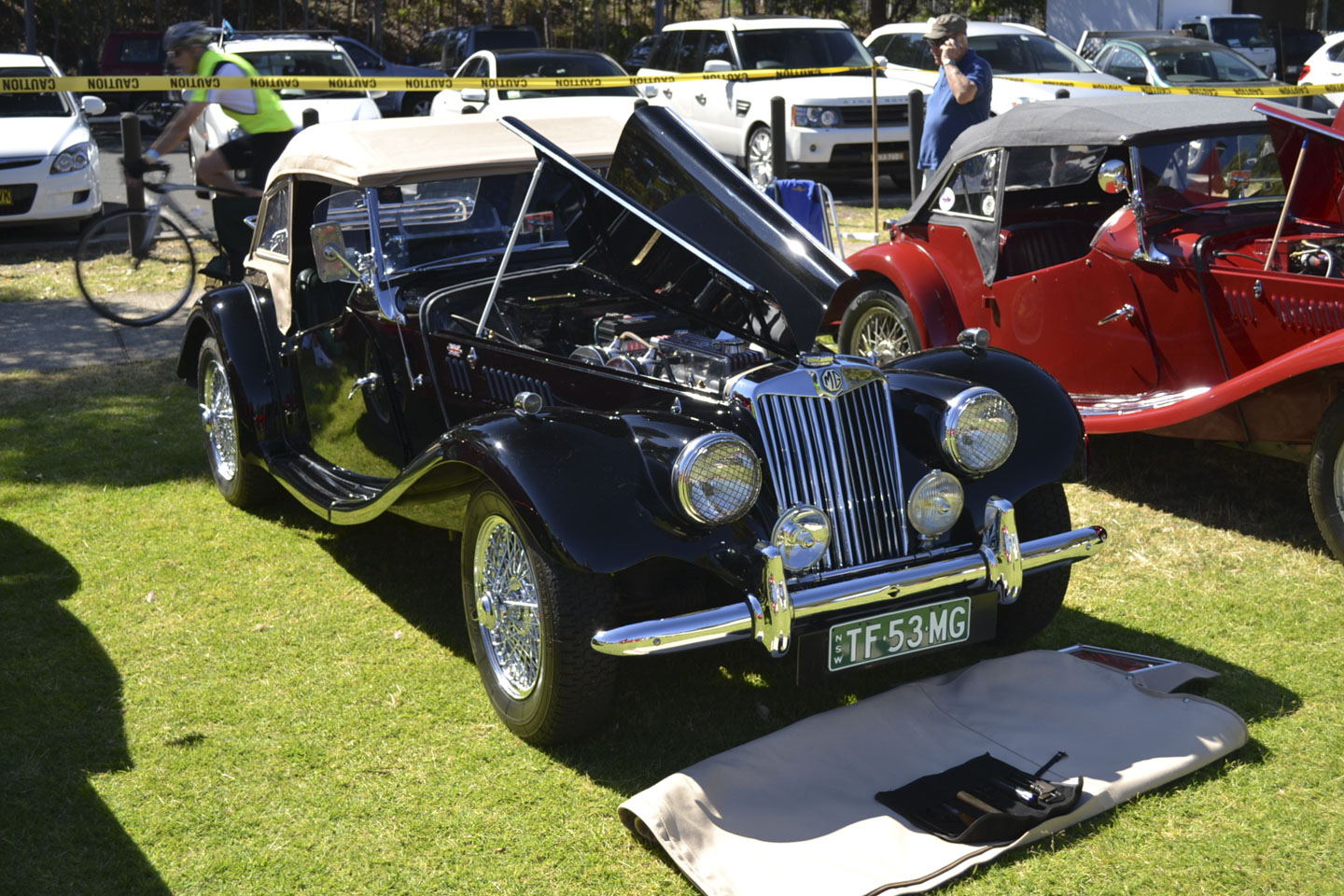The MG Car Club Sydney TF Register
Wayne Blair is The MG Car Club Sydney’s TF Registrar. Reach him by emailing [email protected].
A Welcome from the ‘Classic TF’ Registrar
My name is Michael Hough, and I would like to welcome you to this section of our car club’s website.
I am the Registrar for the Classic TF model – which was produced between 1953 and 1954/5 and was the last of the ‘classic’ MG sports cars. It was followed by the more streamlined MGA.
The classic TF was the last of the traditional line of ‘square rigged’ sports cars and was in many ways an unintended model, as the MG Management had the replacement MGA ready to produce, but couldn’t get funding from the senior BMC hierarchy to fund the production of this brand new model
Consequently, the MG design team developed a ‘ compromise’ model based on the existing TD, which then turned out to be the Classic TF. The TF was produced until funding was approved for production of the MGA.
If you would like a fuller version of this story please read on.
I am the owner of a classic MGTF 1250 (i.e. a car with a 1250cc engine) and the more technical information now reproduced here is essentially a series of extracts I have made from information sent to me by the UK TF Register in early 2014 when I made contact to register my TF:
Extract 1
The UK Club is:- M.G. Car Club Ltd.
Registered Office: Kimber House, 12 Cemetery Road, Abingdon, Oxfordshire, OX14 1AS Reg. No 962227: England VAT No 194 7172 35.
Website:- http://www.mgcc.co.uk/
For T-Series there is a UK Based T Register and the T Register is run for the benefit of MG Car Club members that own TA, TB, TC, TD and TF models. The following extracts from a longer email sent to me by the TF Registrar, and provides an overview of the T Register services, regalia, and a brief history of all the T-type cars.
(For more information, please visit the website: http://www.tregister.org and also the main club website as above).
Extract 2
Here is the information extract about the UK T-Type Register:
THE ‘T’ REGISTER
Founded in 1963, the T Register has grown considerably over the last forty years. At present, we hold details of over 9000 T-Types, both in the U.K. and in most other parts of the world.
The original aims (recording details of cars and providing a means of both communication and competition between owners) remain unchanged, helping members to enjoy using their cars in the manner that Cecil Kimber and the designers at Abingdon intended.
Where Does the Classic TF Fit in the series of T-Types produced by the MG Car Company at Abingdon in the UK?
The Classic TF was the last of the series commencing with the designation TA eg TA / TB/ TC/ TD and TF and for full information about the series please click here to learn more.
Why the Term Classic TF?
We have begun to use the phrase Classic TF because MG in its wisdom decided to use the designator TF twice in its production history, and if you simply search TF or MGTF, you will also find much information about the ‘modern’ TF, which was produced between 2002 and 2005.
Accordingly, our Club has a separate register for ‘Classic’ and ‘Modern’ TFs!
Some More Information about the Classic TF Register
Our Register keeps in touch through the monthly articles – the Classic TF Registrar’s Report – which are written for our excellent monthly MG Car Club magazine ‘Opposite Lock’.
At present our two major ‘ face to face’ activities each year are:-
- The annual Classic TF Register Run. We organise a run to attend the SUNDAY of the Wings Over Illawarra 2-day annual Air Show held over the first weekend in May each year at the Illawarra Regional Airport. For 2018 the Classic TF Register run date is Sunday the 6th of May to Wings Over Illawarra.
- The annual MG Car Club Concours and Display Day held each year – usually at Silverwater Park in October – in 2018 it will be held on October the 21st.
Thank you for expressing interest in our Classic TF section of the website.
I hope you will enjoy your contact with these classic and iconic historic MG sports cars.
I look forward to meeting you at one of our Club activities, and if you need to contact me then my contact details are above, or available on the ‘Contact’ page.
Happy Motoring!
Michael Hough
Extracts from the UK T-Type Register
The “Classic” TF is the final model in a long series of small agile sports cars produced by Morris Garages (MG) –mainly from its long-term home at Abingdon in Oxfordshire UK- some approx. 30 km south of the well -known English University City of Oxford.
The car was initially produced with a smaller engine (XPAG 1250 cc based) and was simply known as the TF, or was later produced with a larger engine (XPEG 1500cc based) and known as the TF1500.
Here is some useful information that will enable you to identify these cars accurately if you own one or are considering buying one:-
“TF and TF1500 Identification Numbers”
Here is advice provided by the UK T Type register:-
Chassis:
The chassis number is the key to identifying your car.
On the TF, the chassis number was stamped on the outside of the left hand dumb-iron (the chassis extension which supports the front bumper). It should be visible under the left front wing. This part of the chassis is vulnerable to accident damage, so the number may have been removed when a replacement dumb iron was fitted. The chassis number was prefixed with the letters TF. The actual number should agree with the identification plate
screwed to the bulkhead under the bonnet of
the car, although the prefix will be different.
There were two prototype TFs numbered TF0250 and TF0251. For production, Abingdon were required to use a BMC-imposed
numbering system starting at TF501. After 6200 TF 1250s and 3400 TF 1500s, the last TF
was numbered TF10100. The changeover from 1250 to 1500 was staggered in batches, so the numbers do not run sequentially.
The identification plate on a TF carries the BMC prefix, which is coded thus:
Letter 1 = H (MG)
Letter 2 = D (2-seater sports)
Letter 3 = Colour (A = Black, B = Grey, C = Red, E = Green, H = Primer, P = Ivory)
Digit 1 = Market (1 = UK, 2 = Export RHD, 3 = Export LHD, 4 = North America LHD)
Digit 2 = Paint type (3 = Cellulose, 5=Primer, 6 = Cellulose Body & Synthetic Wings)
The chassis was stamped with the letters TF followed by the chassis number, whereas on the identification plate the following BMC prefixes were used, followed by a slash:
HDAxx – Black (1876 built)
HDBxx – Grey (1219 built)
HDCxx – Red (3201 built)
HDExx – Green (1528 built)
HDPxx – Ivory (1712 built)
HDHxx – CKD (Completely Knocked Down) – panels painted in primer (85 produced)
HD15 – Primer (1 built – HD15/10036) – assembled car, but painted in primer
HK1 – Bare Chassis (1 built – HK1/5271)
Example: HDC16/8572
Engine:
The engine should have an octagonal brass plate attached to the block
just forward of the exhaust manifold by a single rivet, and the engine number should be
stamped into this plate. The original engine number will be found on
the above-mentioned car identification plate on the bulkhead. If the engine has been replaced, these numbers will be different.
1250cc TF engines were prefixed XPAG/TF. The numbering sequence appears to continue where the TD left off, from XPAG/TF/30056 through to XPAG/TF/36502. Some of these engines were not fitted to TFs, presumably because they were sold separately.
TF1500 engines were simply coded XPEG. The numbering started at XPEG 501.
A large number of cars with XPAG and XPEG engines have had BMC reconditioned (Gold Seal) engines fitted. These do not have the original octagonal plate, but instead a larger oblong plate held by two rivets. The engine number prefix is usually C, D or E, followed by a larger than usual number (E99794 has been seen). With replacement engines, the original number of the block can sometimes be deciphered just above this plate, stamped directly into the block. Be prepared to find, however, that the block of your engine might have started life in a TD, a YB or even a Wolseley 4/44!
“The 5 T Types from 1936 to 1955″
All the T-types share many features. The body is made from an ash frame skinned with steel, bolted to a conventional chassis. The doors hinge backwards, with a cut-out for the elbow. The windscreen is hinged, allowing true wind-in-the-hair motoring. The fuel tank is a slab-shaped box bolted to the back of the car with the spare wheel attached to it. The bonnet is a triple-hinged gullwing type, except for the TF, which looks the same but only the tops can be raised.
Carburation is by twin SU carburetters, and brakes are hydraulic drums throughout. The gearbox is 4-speed with synchromesh on the upper gears and a crash first gear (and second on the TA), and the engine is a 4 cylinder ohv pushrod unit. Apart from independent front suspension on the TD/TF, the technology and styling are pre-war, a serious problem by 1955 when the series ended. Ironically, it is these very features that make the cars so endearing today.
Apart from independent front suspension on the TD/TF, the technology and styling are pre-war, a serious problem by 1955 when the series ended. Ironically, it is these very features that make the cars so endearing today.
TA – Announced in June 1936, the TA was a larger Midget than its predecessors, featuring a 1292cc. pushrod o.h.v. engine. Initially, the only bodywork available was the traditional M.G. Sports style with cutaway doors and swept wings, but this was supplemented from August 1938 by coupe coachwork built on Tickford principles by Salmons and Sons of Newport Pagnell.It is believed that only two Airline coupes were produced, of which
It is believed that only two Airline coupes were produced, of which one survives in the U.S.A. 3003 TAs were produced and the purchase price of each was £222 (sports), £269 (Tickford) and £295 (Airline).
TB – Formally announced in September 1939, on the eve of the outbreak of World War II, but available from the Spring of that year, the TB featured the new 1250cc XPAG pushrod engine of shorter stroke than the MPJG it replaced, together with a dry clutch and revised gearbox and rear axle ratios.This engine, the first all-M.G. design, but
This engine, the first all-M.G. design, but derived from the Morris 10 series M unit, boasted a power output of 54bhp. A derivative of this engine, in highly supercharged form, propelled Goldie Gardner to speeds in excess of 200mph, whilst other famous marques, such as Kieft, Lester, Cooper and Lotus, used modified XPAG engines as power plants during the early post war years. Due to the intervention of hostilities only 379 TBs were produced, available in either sports or Tickford styles.
TC – Regarded by many as the model which established the British sports car on the North American scene, there was very little on the surface to distinguish the first post-war car to leave Abingdon – the body was 4” wider than the TB (which resulted in narrower running boards with two instead of three rubber strips). In addition, the sliding trunnion location for the road springs (the cause of more complaints to the Service Department than any other), was replaced by a system of rubber bushes and shackles, and a single 12v. battery under the bonnet replaced the twin 6v. batteries which had been carried in trays just forward of the rear axle.
Between September 1945 and November 1949, exactly 10,000 TCs were produced, all carrying two-seat sports bodywork, although there is a rumour that one was re-bodied as a Tickford. All T-types up to this point were available only as RHD.
TD – The first T-Type available in both RHD and LHD, with mirror image dashboards. Whilst retaining the traditional perpendicular radiator shell and sports body style of its predecessors, the TD brought many changes when introduced in late 1949.
Immediately obvious were the 15” steel disc wheels (originally unpierced), chromium plated bumpers (although TCs exported to the U.S.A. also sported these) and a dashboard glovebox.
Out of sight however, were such items as independent front suspension and rack & pinion steering (borrowed from the Y-type), a hypoid bevel rear axle, twin-leading-shoe front brakes, and (apart from a few early cars), a stiffening bar under the scuttle aimed at eliminating body shake and increasing protection to the occupants in the event of an accident.
The intention was to produce a sports car with the traditional M.G. flair but more civilised and, therefore, more attractive to the all-important export market. In volume terms, the TD was the most successful of all the T-types. The vast majority of the 29,665 cars produced went abroad – mainly to the U.S.A., where for most of its life it was the only cheap British sports car available. During the production run, many cars were built to competition specification and designated as TD Mk II or TD/C.
TF – At the time of its launch, the TF was criticised as a “breathed over” TD, a stop-gap before BMC would allow a more streamlined shape to be marketed (which became the MGA). Today, the aesthetic changes from the TD are regarded as inspired, despite the short time they took to develop, resulting in (arguably) the prettiest of the T-Types.
Bodily the familiar square-rigger was made more rakish, with a rearwards sloping radiator shell some 9cms lower than the TD, faired-in headlights, a lengthened flare to the rear wings, and a fuel tank less upright than before. The engine was based on the TD Mk II power unit, and now produced 57bhp. The rear axle ratio was changed from 5.125:1 to 4.875:1 and centre-lock wire wheels were offered as an option. Bucket seats and a revised dashboard completed the changes.
Introduced at the September 1953 London Motor Show, the only major production change was the introduction of a 1466cc engine in the “TF 1500” the following year. This engine had a modified block with 72mm bores, compared with 66.5mm previously. Designated the XPEG, it gave 63bhp.
The total TF production run was 9,600 cars, plus two prototypes. By the end of the run, in April 1955, sales were falling fast, and it was clear that the T-Types were regarded as out-of-date when compared with newer models from Austin-Healey and Triumph “
